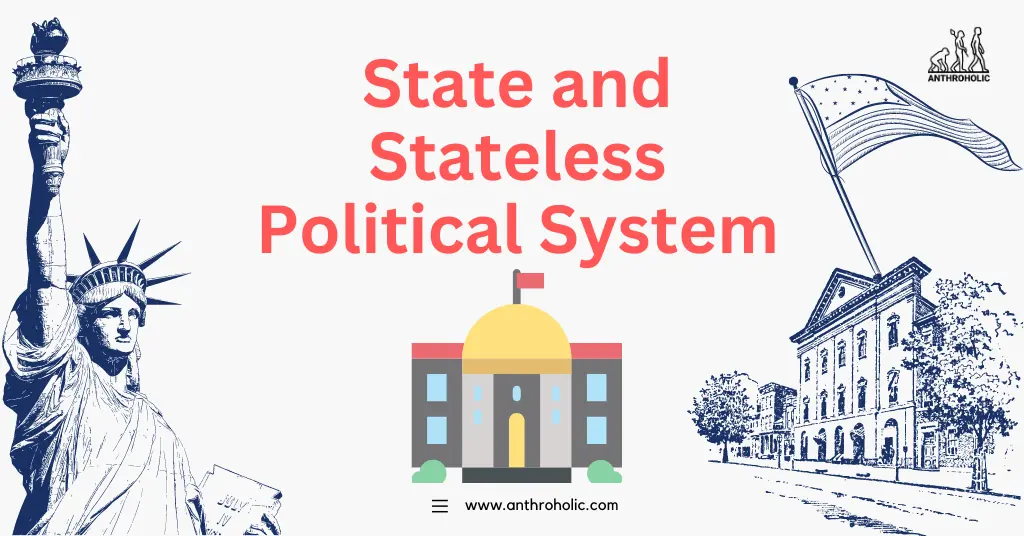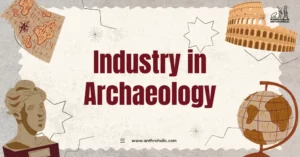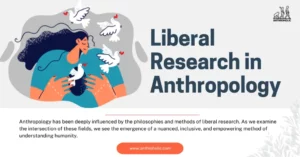AI Answer Evaluation Platform Live Now. Try Free Answer Evaluation Now
State and Stateless Political Systems
Anthropology provides unique insights into various forms of political organization throughout human history. One of the most fascinating dimensions involves distinguishing between state and stateless political systems. State-based political systems are recognized by the presence of a formal government, enforced laws, and hierarchical bureaucracy [1]. In contrast, stateless societies lack a centralized authority and depend on more egalitarian and decentralized mechanisms of conflict resolution and decision making [2].

State Political Systems: Characteristics and Examples
State political systems, or “states,” are formal political entities with an established governance structure. The characteristics typically associated with state systems include:
- Sovereignty: The state has ultimate authority over its territory and the people living within its boundaries.
- Territoriality: The state’s power extends over a clearly defined geographic area.
- Bureaucracy: A complex organization structure that carries out the administrative tasks of the state.
- Legitimacy: Recognition of the state’s authority by its citizens and other states.
An example of a state political system is the United States. It exhibits sovereignty (ultimate power vested in the federal government), territoriality (clearly defined geographic boundaries), bureaucracy (branches of government, administrative agencies), and legitimacy (recognized authority both domestically and internationally).
Stateless Political Systems: Characteristics and Examples
Stateless societies differ significantly from state systems. Their defining characteristics include:
- Decentralized authority: Power and decision-making authority are dispersed among community members.
- Kinship-based organization: Group identity and social cohesion are based on familial relationships or clans.
- Conflict resolution through consensus: Issues are resolved through discussion and mutual agreement rather than authoritative decisions.
- Absence of formal bureaucracy: No formal institutions handle administration and governance.
An example of a stateless political system is the traditional organization of the San people of Southern Africa. The San demonstrate a lack of centralized authority (with leadership roles being fluid), kinship-based organization (strong reliance on familial ties), conflict resolution through consensus, and absence of formal bureaucracy.
| State Systems | Stateless Systems | |
|---|---|---|
| Authority | Centralized | Decentralized |
| Organization | Bureaucracy | Kinship-based |
| Conflict Resolution | Formal legal system | Consensus |
| Examples | United States | San People |
Advantages and Challenges
Both state and stateless systems have unique advantages and potential challenges.
State political systems provide benefits such as:
- Order and stability due to enforceable laws.
- Ability to mobilize resources for collective goods (infrastructure, defense).
- Formal mechanisms for conflict resolution.
Challenges for state systems include:
- Potential for power concentration and abuse.
- Bureaucratic inefficiencies and corruption.
- Potential for social inequality and stratification.
Stateless political systems offer advantages like:
- Egalitarian principles and power distribution.
- Flexibility and adaptability due to the absence of bureaucratic rigidity.
- Strong communal ties and social cohesion.
However, they face challenges like:
- Difficulty managing large-scale conflicts or disputes.
- Lack of resources for large-scale projects.
- Vulnerability to external threats and influences.
Conclusion
The dichotomy of state and stateless political systems provides a compelling lens through which to view human political organization. As anthropology continues to explore these diverse forms of governance, it sheds light on the remarkable capacity of societies to adapt and create structures that reflect their unique circumstances and values. In the complexity of human culture and society, both state and stateless political systems have found their place, each with their strengths, weaknesses, and adaptability to their respective environments.
References
[1] Service, Elman R. (1975). Origins of the State and Civilization: The Process of Cultural Evolution. Norton.
[2] Boehm, Christopher (2001). Hierarchy in the Forest: The Evolution of Egalitarian Behavior. Harvard University Press.




